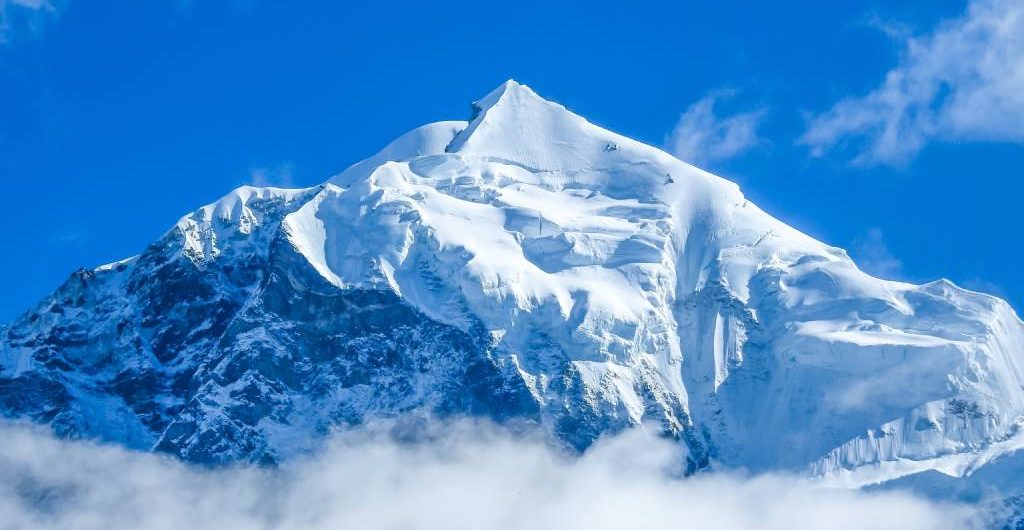
Nestled in the heart of the Himalayas, Mount Everest is an awe-inspiring testament to the grandeur of nature. It stands as the world’s tallest peak, capturing the imagination of adventurers and trekkers alike. Located in Nepal, this majestic mountain holds profound historical, cultural, and geographic significance.
Geographic Features
- Elevation and Height: At an astonishing 8,848.86 meters (29,031.7 feet) above sea level, Mount Everest reigns supreme as the Earth’s highest point. Its towering height has long fascinated scientists and mountaineers.
- Location within the Himalayas: Situated in the eastern part of Nepal, Mount Everest is part of the Mahalangur mountain range within the broader Himalayas. Its location near the border of Nepal and Tibet adds to its allure.
- Surrounding Geography: The Everest region is marked by stunning geographic diversity, from lush valleys to icy, barren slopes. It’s home to the Sagarmatha National Park, a UNESCO World Heritage Site, rich in biodiversity and natural beauty.
Climbing Mount Everest
- History of Climbing Attempts: The history of Everest ascents is replete with tales of courage and determination. Sir Edmund Hillary and Tenzing Norgay’s historic 1953 expedition marked the first successful ascent, paving the way for countless others to follow.
- Popular Routes: Climbers often choose between the South Col route, accessible from Nepal, and the North Col route, accessible from Tibet. Both present unique challenges and require extensive preparation.
- Challenges and Dangers: Everest is notorious for its unpredictable weather, avalanches, crevasses, and altitude sickness, making it one of the most perilous climbs on Earth.
- Successful Ascents: Over the years, thousands of climbers from around the world have reached the summit, achieving their dreams and testing their limits.
Cultural and Environmental Impact
- Influence on Local Sherpa Communities: The Sherpa people, native to the Everest region, have played an indispensable role in mountaineering expeditions, serving as guides and porters. Everest’s climbing industry has significantly impacted their way of life.
- Environmental Conservation Efforts: The growing number of climbers has raised environmental concerns, prompting efforts to minimize the ecological footprint in the region. Conservation initiatives aim to protect the fragile ecosystem.
- Tourism and Economic Impact: Tourism centered around Everest has been a boon for Nepal’s economy, providing employment and revenue. It has also increased awareness of the region’s cultural heritage.
Notable Expeditions and Climbers
- Sir Edmund Hillary and Tenzing Norgay: Their pioneering spirit and successful ascent in 1953 remain a source of inspiration.
- Reinhold Messner: A legendary mountaineer, Messner achieved the first solo ascent without supplemental oxygen in 1980, pushing the boundaries of what was thought possible.
- Recent High-Profile Climbs: Numerous adventurers and celebrities have sought to conquer Everest in recent years, drawing attention to the mountain’s enduring allure.
Records and Achievements
- First Ascent: The historic 1953 expedition remains a watershed moment in mountaineering history.
- Fastest Ascents: Records for the fastest ascent and descent times continue to be broken by elite climbers.
- Youngest and Oldest Climbers: Mount Everest has witnessed the youngest and oldest climbers reaching its summit, showcasing the mountain’s inclusivity and challenge.
Safety and Regulations
- Mount Everest Permits: Strict regulations govern Everest expeditions, including the issuance of permits and fees to ensure safety and environmental protection.
- Safety Measures and Preparations: Climbers are required to undergo rigorous training and acclimatization before attempting the summit.
- Recent Changes in Regulations: In response to safety concerns and overcrowding, authorities have implemented new measures to manage the number of climbers.